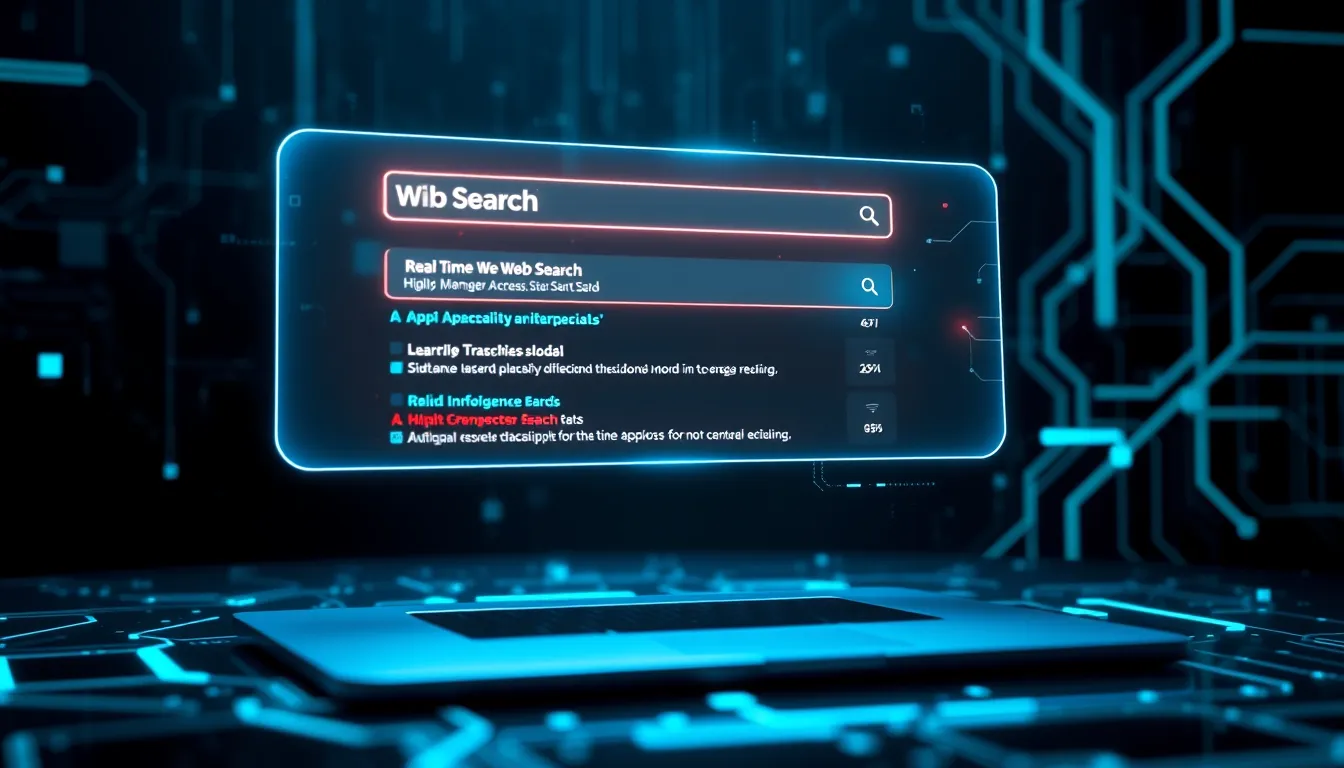Now Reading: GPT 4o Transcribe Voice – Expanding Capabilities and Use Cases
-
01
GPT 4o Transcribe Voice – Expanding Capabilities and Use Cases
GPT 4o Transcribe Voice – Expanding Capabilities and Use Cases

Expanding Capabilities and Use Cases
The versatility of the gpt-4o-transcribe voice AI model allows it to cater to a wide range of applications. Here are some of the primary use cases:
1. Real-Time Transcription and Captioning
For live events, conferences, or virtual meetings, real-time transcription is essential. The model can accurately transcribe spoken words as they are spoken, providing a dynamic tool for generating live captions. This can be particularly beneficial for accessibility, allowing individuals with hearing impairments to fully participate in live events. Furthermore, the immediate transcription can be saved and archived for future reference, enhancing documentation practices.
2. Virtual Assistants and Chatbots
Virtual assistants powered by the gpt-4o-transcribe voice AI model can offer a vastly improved interaction experience. By combining high-fidelity speech recognition with engaging speech synthesis, these assistants are capable of handling varied user queries in a conversational manner. This capability not only improves user satisfaction but also makes these systems more resilient against errors during communication by effectively managing ambiguities in spoken language.
3. Customer Service Automation
Integrating speech AI into customer service platforms can lead to drastic improvements in handling inquiries and issues. The model enables systems to understand complex customer requests and provide timely, accurate responses. By automating routine tasks like call transcription and response generation, human agents can focus on more complex issues, thereby improving overall efficiency and customer satisfaction.
4. Educational Tools and E-Learning Platforms
The education sector stands to benefit significantly from the integration of the gpt-4o-transcribe voice AI model. Interactive voice responses can aid in language learning and reading comprehension by providing dynamic feedback to students. Additionally, the capacity to convert spoken lectures or discussions into text makes study materials more accessible, supporting diverse learning needs and formats.
Case Studies and Success Stories
Several organizations have already begun integrating the gpt-4o-transcribe voice AI model into their operations with impressive results. For instance, startups focusing on virtual meeting platforms have reported a reduction in latency and an improvement in transcription accuracy, leading to more efficient meeting management and enhanced user experiences. Similarly, large enterprises in the customer service domain have leveraged the model to automate call center operations, resulting in faster response times and improved customer engagement.
One notable success story involves an e-learning platform that integrated the model to provide real-time subtitles during live lectures. The result was a significant increase in accessibility and engagement among students, especially those who rely on visual text to complement auditory learning. By enabling a more dynamic and inclusive learning environment, the platform not only enhanced the academic experience but also broadened its user base significantly.
Future Trends in Voice AI and Speech Recognition
As voice AI continues to evolve, several trends are emerging that will further influence the direction of speech recognition and synthesis technologies:
Advancements in Natural Language Understanding
Future iterations of voice AI models like gpt-4o-transcribe are expected to incorporate even more sophisticated natural language processing (NLP) capabilities. This evolution will involve deeper contextual understanding, allowing systems to grasp subtle nuances in human speech. Such advancements will make voice interactions almost indistinguishable from human conversation, enhancing the realism and effectiveness of virtual assistants and chatbots.
Increased Personalization
Another trend is the move towards personalized voice interactions. By analyzing user behavior and preferences, future voice AI systems will be able to tailor their responses and interaction styles to individual users. This personalized approach can significantly enhance user satisfaction and engagement, as the system will adapt to meet the unique needs of each user.
Integration with Other Emerging Technologies
The convergence of AI with other emerging technologies like augmented reality (AR) and virtual reality (VR) is set to create immersive interactive environments. The gpt-4o-transcribe voice AI model is well-positioned to be a core component in such integrations, providing natural language interactions within complex, multi-sensory digital spaces. For example, in a VR environment, users can interact with virtual characters or objects using natural speech, creating a more engaging and realistic experience.
Enhancements in Multilingual Capabilities
Globalization demands support for multiple languages and dialects. Future versions of the gpt-4o-transcribe model will likely offer enhanced multilingual capabilities, ensuring accurate speech recognition and synthesis across a broader spectrum of languages. This will be particularly important for multinational companies and applications designed for a diverse user base.
Deep Dive: How It Works
The underlying technology in the gpt-4o-transcribe voice AI model is a culmination of years of research in machine learning and natural language processing. Below is an outline of the core components that make this model efficient and reliable:
1. Advanced Neural Networks
At the heart of the model are advanced neural networks that process audio data. These networks have been trained on vast datasets encompassing a wide range of speech variations, ensuring that the model understands various accents, speech speeds, and intonations. This depth of training is critical for achieving high accuracy in real-world applications.
2. Context-Aware Algorithms
The model employs context-aware algorithms that enhance its ability to understand the meaning behind spoken words. By analyzing the context in which words are used, the system can disambiguate similar-sounding phrases and reduce errors in transcription. This feature is vital for applications that require precise understanding, such as legal or medical transcription.
3. Real-Time Processing Capabilities
Real-time interaction is a cornerstone of the gpt-4o-transcribe voice AI model. The architecture is optimized for low latency, ensuring that audio input is processed and converted into text almost instantaneously. This real-time capability is essential for interactive applications where delays in response could hinder user engagement.
4. Continuous Learning and Updates
To remain at the forefront of voice recognition technology, the gpt-4o-transcribe model is designed with the ability to learn continuously. The system utilizes feedback loops and updated datasets to refine its algorithms over time, ensuring that it adapts to changing language patterns and emerging speech nuances. This iterative approach not only improves performance but also keeps the technology relevant in a rapidly evolving digital landscape.
Best Practices for Developers
When integrating the gpt-4o-transcribe voice AI model into your applications, it is important to follow best practices to maximize performance and user satisfaction:
A. Optimize Audio Quality
Ensure that the audio input is of high quality by reducing background noise and using appropriate microphones. Cleaner input data results in higher transcription accuracy and a smoother overall experience.
B. Leverage Comprehensive Documentation
Take full advantage of the extensive documentation and sample code provided by the model’s development team. Understanding the integration process and available configuration options can save significant development time and reduce potential errors.
C. Monitor and Iterate
Deploy the model in a staged environment and continuously monitor its performance. Use analytics to gather insight into transcription accuracy and user feedback, and refine your implementation based on these findings. Regular updates and iterations are key to maintaining a robust and user-friendly voice interface.
D. Focus on Security and Privacy
When handling voice data, ensure that your application adheres to strict data protection and privacy standards. Implement secure data transfer protocols and anonymize sensitive information where necessary. Protecting user data is crucial for maintaining trust and complying with regulatory requirements.
Conclusion
In conclusion, the gpt-4o-transcribe voice AI model sets a new standard in the integration of advanced voice capabilities with text-based applications. By offering effortless setup and exceptional performance in both speech recognition and synthesis, this model simplifies the development process and significantly enhances user engagement. Whether you are developing virtual assistants, customer service applications, or real-time transcription tools, the gpt-4o-transcribe voice AI model provides a robust, scalable solution that meets the rigorous demands of modern applications.
As voice-first technologies continue to dominate the digital landscape, embracing such innovative models can deliver a competitive edge and open new avenues for user interaction and engagement. With continuous enhancements on the horizon, integrating the gpt-4o-transcribe voice AI model today not only future-proofs your applications but also ensures that you’re leveraging the most advanced technology available in speech recognition and synthesis.
By combining technical excellence with a streamlined, developer-friendly approach, the gpt-4o-transcribe voice AI model is poised to transform the way we interact with devices and digital platforms. Its blend of precision, speed, and natural language capabilities marks a significant leap forward in the evolution of voice AI. Embrace this cutting-edge technology to revolutionize your applications and deliver outstanding natural interactions that captivate and engage users in ways never before possible.
Ultimately, the future of voice interfaces is here, and the gpt-4o-transcribe voice AI model stands as a beacon of innovation and efficiency in this rapidly evolving landscape. As developers and businesses continue to explore new possibilities, this model will undoubtedly play a key role in shaping the next generation of interactive digital experiences.

























